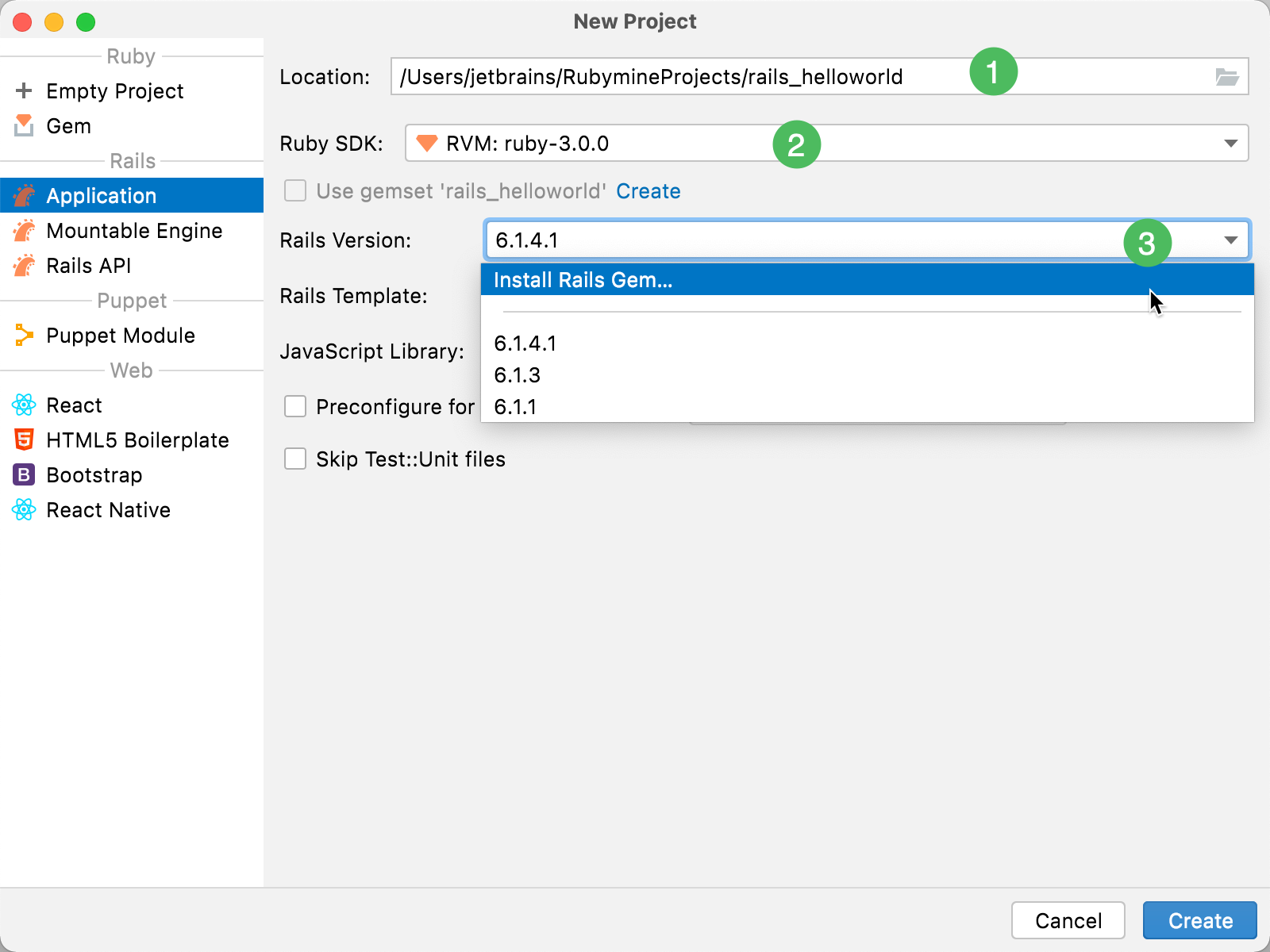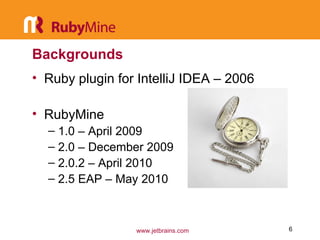


Stepping through a programĪfter starting the debugging session, RubyMine stops execution on the 10th line.

That’s it! We are ready to start debugging.
#Ruby on rails rubymine tutorial install
If your project SDK doesn’t have debugging gems installed, RubyMine will suggest that you install them: Press and hold down the Shift key (the dialog title will be changed to Debug) and press Enter.Press Ctrl twice and type the following command in the invoked popup: ruby script.rb.To start a debugging session, do the following: The script will be suspended at this line and we can check the program’s state. Alternatively, you can place the caret on this line and press Ctrl+F8 / ⌘F8. To do this, click the left gutter next to this line. This method accepts equation coefficients and a sign so you can determine both roots.īefore starting a debugging session, let’s set a breakpoint next to the following line: x1 = solve(a, b, c, 1) In this script, the x1 and x2 equation roots are determined by calling the solve method. (-b + (sign) * Math.sqrt(discriminant)) / (2 * a) This will be a script for solving a quadratic equation without additional checks (for example, whether or not the discriminant is equal to or less than 0): a = 1 Smart step into, block breakpoints and moreįirst, let’s create a new Ruby project from scratch.Let’s dig a little deeper into the debugging process and see how we can start a debugging session, set and configure breakpoints, evaluate variables and expressions, and all the other little useful things you should know about in between. All of these features are applied to Ruby projects and Rails applications.
#Ruby on rails rubymine tutorial code
The RubyMine debugger provides various ways to examine the state of a running application: you can step through your code and check variable values, set watches on variables to see when values change, and so on. These include performance optimizations, Smart Step Into, block breakpoints, and others. In this blog post, we’ll review the rich debugging capabilities available in RubyMine and then we’ll have a quick rundown of the new debugging features added in v2019.2. One of the main advantages of IDEs over text editors is the debugging experience. To learn more about debugging capabilities available in RubyMine, refer to the help topics and tutorials from the Debug section.


 0 kommentar(er)
0 kommentar(er)
